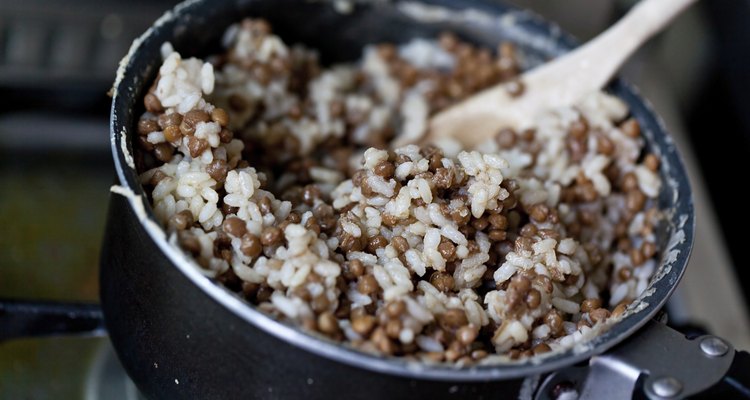
Dario Lo Presti/iStock/Getty Images
Around the world, rice and legumes are central components of many diets. In India, a lentil dish called daal, which is richly flavored with spices including ginger, turmeric, cayenne and cumin, is served with rice at almost every meal. Daal bhat, lentils with rice, is the national dish of Nepal. Rice and lentils are inexpensive, low in fat and nutritious.
Lentil Nutrition
Lentil cultivation in the Middle East dates to around 9500 BC and may be one of the world’s first cultivated crops. Nowadays, Canada is the world’s leading lentil producer, growing more than a million tons in 2008. A 1-cup, 230-calorie serving of lentils provides 63 percent of the recommended daily amount of dietary fiber, 37 percent of the RDA of iron, 198 percent of the RDA of molybdenum, 89 percent of the RDA of folate and 50 percent of the RDA of manganese. A cup of lentils has 18 g of protein and only 6 calories from fat. The Harvard School of Public Health website recommends lentils as a high-protein, low-fat meat alternative.
Preparing Lentils
Lentils are extremely inexpensive and easy to prepare. The cheapest way is to buy dried lentils in bulk or prepackaged. Unlike other dried beans, lentils don’t require pre-soaking. However, you do need to sort through them to remove any small stones. Then rinse them and cook them in water or broth. Most recipes recommend cooking lentils for 15 to 30 minutes. You can add spices and vegetables to vary the taste. Dried lentils can be safely stored in a cool place for up to a year.
Rice
Rice comes in many varieties, but white and brown are the most common. Brown rice is a whole grain, as it retains the high-fiber, unmilled kernel. Brown rice is higher in protein, fiber and other nutrients than white rice. In the United States, white rice is fortified with thiamine, niacin, iron, riboflavin and folic acid. Calcium and vitamin D are also commonly added. Although brown rice is the healthier option, it takes longer to cook, and many people are accustomed to the more refined taste of white rice.
Complete Protein
While meat contains all the essential amino acids, vegans have to eat a combination of foods to get all their nutrients. Lentils and rice, when eaten together, form a complete protein. Legumes such as lentils contain the greatest amount of protein available from the vegetable kingdom. While many nonvegetarians worry that a meatless diet lacks protein, most meat eaters consume much more protein than they need.
Related Articles
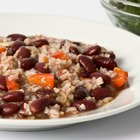
Are Rice & Black Beans Healthy?

How to Soak Amaranth
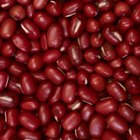
How to Soak Adzuki Beans
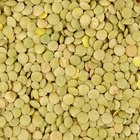
How to Cook Trini Style Lentils

How to Cook Beef Florentine

How Many Calories in a Taco Bell Bean ...
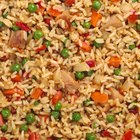
How to Cook Arroz Chaufa

How to Cook Moose Meat
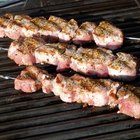
How to Cook Pork Loin

How to Freeze Lentils

How to Season Edamame

List of High Protein Vegetables
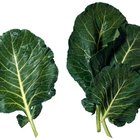
How to Cook Collard Greens in a Crock ...
El Toro Nutrition
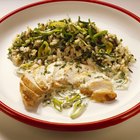
How to Cook Foster Farm Chicken Breast ...

How to Cook Couscous With Chicken Broth
How to Make Lentils Into a Meat ...

How to Cook Red Camargue Rice
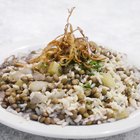
Do Lentils & Rice Have Calcium & ...

Southeast Asian Diet & Nutrition
References
Writer Bio
Teresa Bergen writes about fitness, health, yoga, travel and the arts. She is the author of "Vegetarian Asia Travel Guide" and has written hundreds of articles for publications online and off. Bergen also teaches yoga, spinning and group fitness classes, and is an ACE-certified personal trainer.
Photo Credits
Dario Lo Presti/iStock/Getty Images